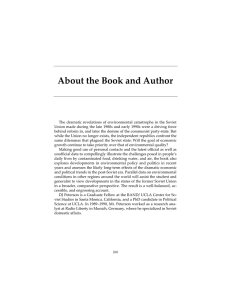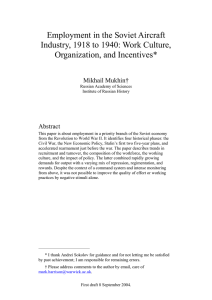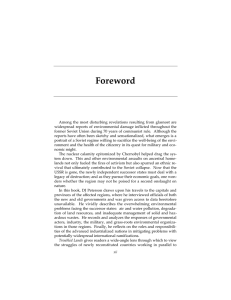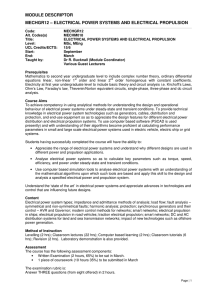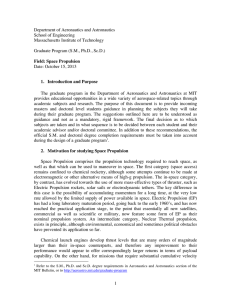A Soviet Market for Inventions: Jet Propulsion, 1932 to 1946 Abstract
advertisement
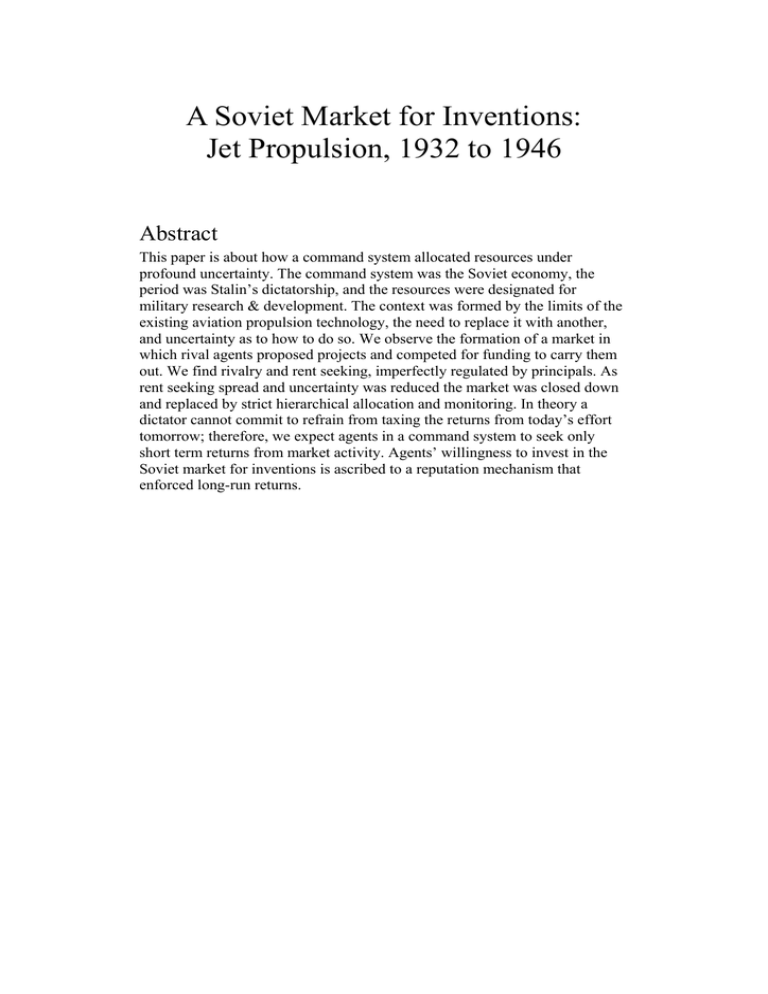
A Soviet Market for Inventions: Jet Propulsion, 1932 to 1946 Abstract This paper is about how a command system allocated resources under profound uncertainty. The command system was the Soviet economy, the period was Stalin’s dictatorship, and the resources were designated for military research & development. The context was formed by the limits of the existing aviation propulsion technology, the need to replace it with another, and uncertainty as to how to do so. We observe the formation of a market in which rival agents proposed projects and competed for funding to carry them out. We find rivalry and rent seeking, imperfectly regulated by principals. As rent seeking spread and uncertainty was reduced the market was closed down and replaced by strict hierarchical allocation and monitoring. In theory a dictator cannot commit to refrain from taxing the returns from today’s effort tomorrow; therefore, we expect agents in a command system to seek only short term returns from market activity. Agents’ willingness to invest in the Soviet market for inventions is ascribed to a reputation mechanism that enforced long-run returns.



